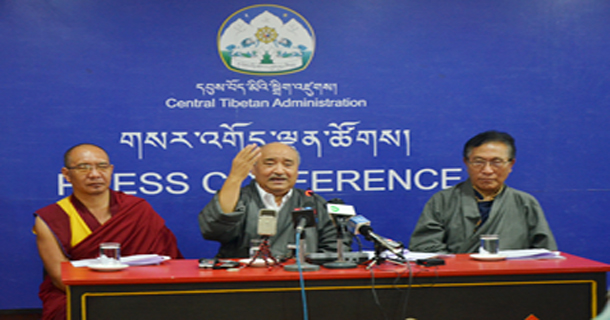For the first time in the history of the government-in-exile, a radical political perspective is being represented among the contenders for the Sikyong position. Although all previous Sikyong candidates and appointments have been dedicated to the Dalai Lama’s Middle-Way Approach*, this time there is a candidate proposing another solution. Lukar Jam, ex-political prisoner, President of the Gu Chu Sum Former Political Prisoners Movement, and outspoken advocate of Rangzen, or full independence for Tibet, has announced that he will be on the ballot this fall. In the 2011 election, Jam ran for a seat in Parliament, hoping to represent Do-Mey province, but failed to earn enough votes for the position. However, he has returned to this year’s election as the only candidate who believes that autonomy is not enough, and he represents a different side of Tibetan politics than the public is used to seeing in office.
Having an individual like Lukar Jam involved in the political process is in line with the Dalai Lama’s vision of bringing full democracy to the Central Tibetan Administration. At its heart, a democratic society is one in which a variety of opinions can be expressed and discussed in order to allow an informed public to make decisions about its leadership. Having a Rangzen candidate on the ballot will enable the Tibetan people to express whether they support independence or autonomy.
In addition to major changes on an ideological level, there are also some practical changes being made with regards to this election’s proceedings. In an effort to make the candidates more financially accountable, for the first time ever the Central Election Commission (CEC) has placed a limit on campaign spending. Candidates for the Sikyong position cannot spend more than INR 800,000, and TPiE candidates are being held to a budget of INR 300,000. The candidates must submit reports on their campaign spending to the regional election commissions before the election results can be confirmed and made public.

The Chief Election Commissioner and the Additional Election Commissioners at the press conference
Photo: tibet.net
The financial limitations placed on this year’s candidates are fairly strict when compared to past records of campaign spending. The Tibetan Political Review reports that in the 2010-11 election, Tenzin Tethong spent nearly two million rupees on his unsuccessful campaign. Even Tashi Wangdu’s less active efforts in the campaign process still reportedly cost him over INR 700,000. Although the current Sikyong Dr Lobsang Sangay has not disclosed his spending reports, given that he won the election and was campaigning vigorously alongside Mr Tethong, it is likely that his figures far surpassed this year’s budget of INR 800,000.
According to the Tibetan Political Review, the bulk of the 2010-11 campaign spending went towards the Sikyong candidates’ travel expenses, funding Tethong and Sangay’s trips from their homes in the United States. It is likely that in this election cycle, the candidates’ ability to travel freely to promote their political platform will be much more limited. This may result in an advantage for candidates based in India, who need less funding for international travel and will be able to spend their money on more promotional items to showcase their ideas and qualifications. However, it is unclear whether there may be certain ways for candidates to get around the budgetary concerns. For example, there are no guidelines for budgetary allocation if a Sikyong candidate is making a personal trip and would like to make campaign stops during his or her travel.
In another systemic change, the CEC has stipulated that all campaigning efforts must end two days before the final Election Day in March 2016. Candidates were also discouraged from campaigning heavily in Nepal where local efforts are currently focused on rehabilitation after the earthquakes earlier this year.
The CEC’s new rules also place limitations on the actions of members of the public who may be campaigning for a particular candidate. The campaigners must have written approval from the candidate in order to carry out any events or demonstrations, and all campaign materials must show the name of the person campaigning and the name of the person who printed the materials. Political materials may not include images of the Tibetan national flag, photos of the Dalai Lama, maps of Tibet, or symbols of the Central Tibetan Administration. Ultimately, these rules are aimed at increasing accountability within the democratic process and ensuring that everybody is working towards the same political goals.
*The Middle-Way Approach, the official policy of the CTA, advocates autonomy for Tibet within China’s sovereignty.
Keep up to date on election issues by following this link to our election news page: Election 2016




 Print
Print Email
Email